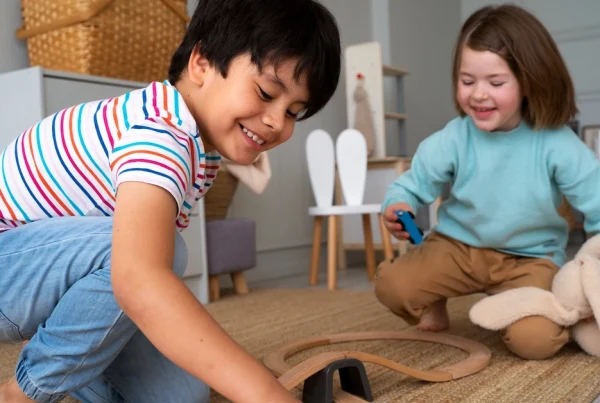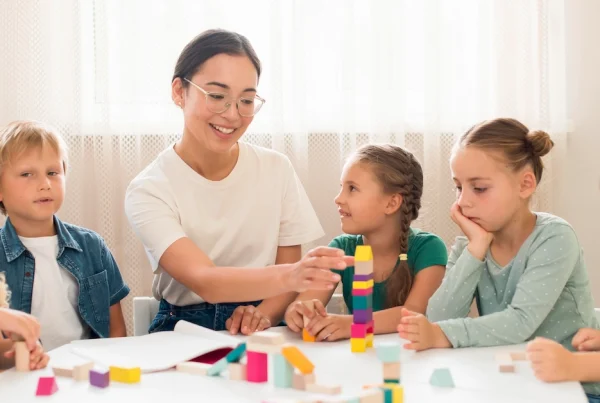For children and adults, the digital world offers a captivating universe brimming with endless mysteries. But just like any good detective story, hidden beneath the surface lies a question: what is real, and what is the illusion?
This notion underscores the critical importance of understanding how to develop media literacy, equipping individuals with the essential skills to navigate the complexities of digital content, discern fact from fiction, and cultivate a deeper understanding of the information they encounter.
Hence, media literacy becomes critical in empowering humans, especially young minds, to understand the digital landscape and transform from passive viewers into active investigators. By nurturing these vital skills, parents can equip the next generation to navigate the complexities of our information age, becoming responsible consumers and confident storytellers in their own right.
What is Media Literacy?
According to the National Association for Media Literacy Education (NAMLE), media literacy can be defined as the skill to access, analyze, evaluate, create, and act effectively within various forms of communication.
Simply put, media literacy is the ability to look at things online and tell if they’re true or not, see if someone is trying to trick us, and make smart choices about what we do online. It’s not just about watching videos or playing games – it’s also about responsibly creating and sharing information.
For young children, learning media literacy is like getting a guidebook to help them through the online world and figure out the stories they find there. Parents and teachers play a big part in helping kids learn these skills early so that they can be smart and safe online.
 So, How Can You Start Teaching Your Children to Be Media Literate?
So, How Can You Start Teaching Your Children to Be Media Literate?
Teaching your children to be media literate begins with fostering an open dialogue about the digital landscape and the information they consume. It’s essential to encourage their critical thinking by asking questions about the content they encounter, prompting them to consider its source, credibility, and potential biases.
Additionally, you need to guide your child to fact-check information and recognize common tactics used in misleading media. By actively engaging with your children and offering practical tools and strategies, you can empower them to navigate the digital world with confidence and discernment, ultimately cultivating a foundation of media literacy that will serve them well in an increasingly interconnected society.
1. Explore Media Together
Conversation with kids about the shows, videos, or games they enjoy is crucial in developing media literacy. 1 Thessalonians 5:21 encourages us to “prove all things; hold on to what is good,” meaning we can guide our children to think critically about the media they consume.
Ask questions like, “What do you like about it?” and “What do you think the message is?” These questions help them to be aware and think more critically about the media they consume.
Also, choose media, such as news articles or videos, and discuss them with your child. Ask questions such as, “Do you think this is trying to sell us something?” or “Can we trust the information here?” This joint exploration helps kids learn to question and understand media messages. When doing this activity, choose topics that are simple and easy to digest for these little ones.
Read more: Parenting Education: Parents as Lifelong Learners
2. Double Check Your Sources!
Oftentimes, we are bombarded with faulty clickbait content that features a false statement as the headline. Many adults fall victim to it, and it’s natural to assume that children are susceptible to the threat of false information.
Encouraging the habit of checking where information comes from helps everyone, including kids, to know what’s true and what might not be. It’s like giving them a superpower to navigate the internet with confidence and accuracy. By teaching children to ask if the information they see is reliable, we’re helping them use the internet smartly and responsibly.
Moreover, teaching children to double-check their sources instills a sense of skepticism and discernment that is crucial in today’s digital age. Show them how to verify information by cross-referencing it with reputable sources or fact-checking websites. Encourage them to consider the author’s expertise, the publication’s credibility, and any potential biases that may influence the content.
By empowering children to evaluate the information they encounter online critically, we equip them with the tools to navigate the vast sea of digital content responsibly. This skill helps protect them from misinformation and fosters a habit of critical thinking that will serve them well in all aspects of life.
3. Playful Deconstruction
Turn commercials into games by analyzing advertisements together, spotting persuasive techniques such as catchy jingles, celebrity endorsements, or emotional appeals. Encourage the creation of “un-commercials,” where children can showcase healthy choices or express critical thinking.
It’s not only limited to commercials; you can also do this activity with TV shows and movies. Embrace the role of media archaeologists during movies or shows by pausing to discuss characters’ motives, the portrayal of different lifestyles, and the underlying message.
The more you incorporate these activities, the better your children will become at discerning and evaluating the information they encounter.
Read more: Fun and Easy Critical Thinking Activities for 5-Year-Olds
4. Create, Don’t Just Consume
Encourage children not only to consume media but also to create content actively. Part of the learning process of being media literate and critical consumers is knowing how to make valuable and quality content.
Empower their voices by urging them to write stories, draw comics, or film short videos. This hands-on approach not only enhances their creativity but also provides valuable insights into the process of crafting messages, and fostering responsible communication habits.
Additionally, explore a variety of storytelling tools together. Introduce them to user-friendly animation software or photo editing apps, allowing them to experiment with diverse mediums for expressing their ideas.
Seize this opportunity to remind children to use the media as a platform to promote the ultimate truth found in Jesus Christ, as mentioned in John 4:16. And to speak the truth to one another as stated in Zechariah 8:16, “These are the things you are to do: Speak the truth to each other and render true and sound judgment in your courts.”
5. Little Seeds, Big Impact
Equipping our children with media literacy skills is akin to planting seeds of wisdom – nurturing their ability to discern truth from fiction and navigate the ever-evolving digital landscape with discernment. Just as Proverbs 2:11-12 urges, “Discretion will guard you, understanding will watch over you, to save you from the way of evil, from the one who speaks perverse things,” media literacy empowers young minds to question messages, identify biases, and seek truth, safeguarding them from misinformation and manipulation.
When we build upon critical thinking and responsible consumption habits early on, we pave the way for a generation of informed and ethical digital citizens prepared to engage with the world around them with wisdom and understanding.
Remember, just as a healthy seed flourishes with careful attention, nurturing media literacy skills in young minds ensures they blossom into thoughtful and responsible consumers of information, ready to tackle the challenges and opportunities of the digital age. To gain more insights on parenting in the digital age, refer to our Parenting Podcast on Keeping Technology in its Place.
At SPH, we care more about cultivating wisdom than just imparting knowledge. Our innovative curriculum incorporates media literacy lessons will help your children navigate the digital world in this modern era, guiding young minds to question, discern, and seek truth in the dynamic digital landscape. Learn more about SPH’s Primary Years Program here.








